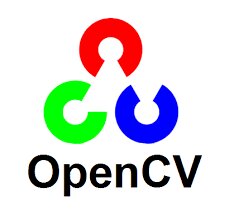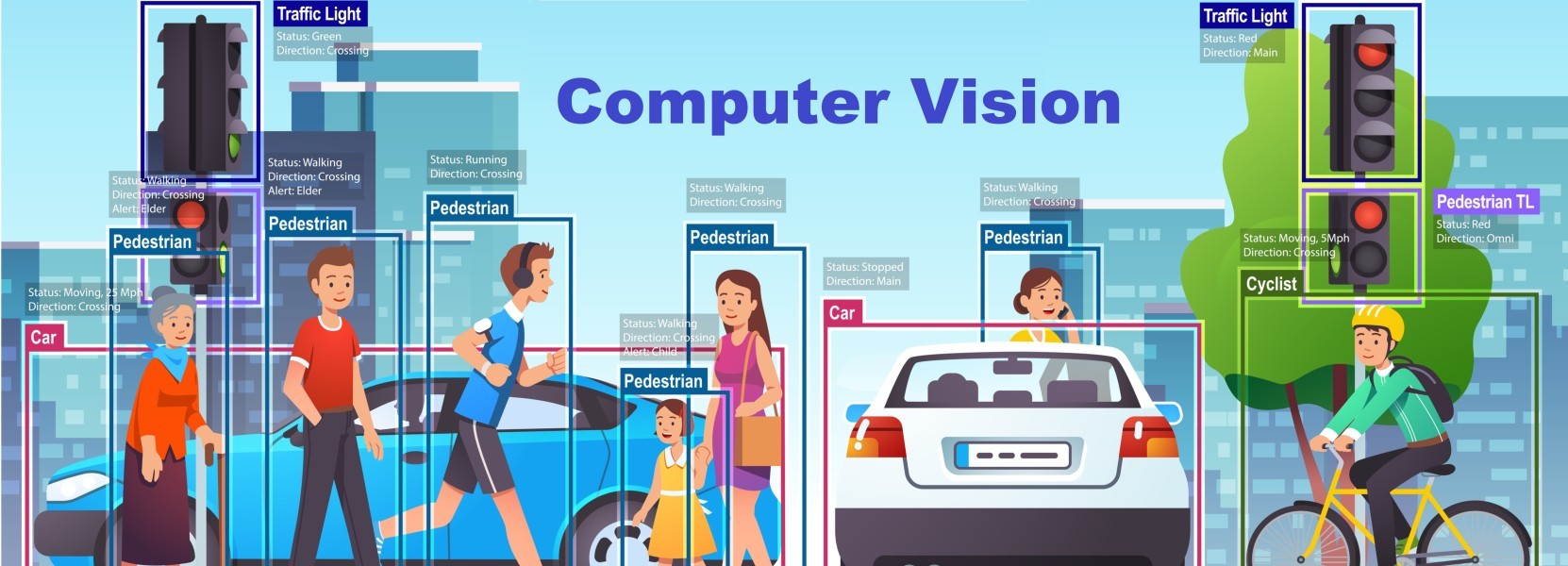Getting started with OpenCV
OpenCV is a huge open-source for computer vision, machine learning, and image processing that currently plays a big role in real-time operations. This article will give you introduction about OpenCV like its features, advantages and its history.
OpenCV is an open-source computer vision library developed by Intel. It offers a tremendous range of applications in different fields, including machine learning, bioinformatics, photogrammetry, image processing and editing, shadow generation, and much more. Over time, the library has gained great popularity among both beginners and experts.
The best thing is that it is freely available and easy to use. It can be installed on Windows and Linux operating systems without any problem. The command line interface is available on both platforms, as well as a library-based programming model. This allows users to use whichever model they feel more comfortable with. There are libraries for iOS, Android, Blackberry, and many other platforms. Extensions are available for Visual Studio, Eclipse, and countless other development environments.
Best-suited IT & Software courses for you
Learn IT & Software with these high-rated online courses
What is OpenCV?
It is a cross-platform library that enables the development of real-time computer vision applications. It primarily focuses on image processing, video recording, and analytics, including features such as face recognition and object detection.
OpenCV is considered one of the most popular libraries for computer vision. Computer vision is a crucial area of Artificial Intelligence research.
Also read: Deep Learning and Neural Networks Online Courses & Certifications
Also read: NLP and Text Mining Online Courses & Certifications
Also read: Artificial Intelligence
Brief history of OpenCV
- The first major version, OpenCV 1.0, was released in 2006.
- In October 2009, the second major version of OpenCV 2 was released.
- In August 2012, OpenCV was acquired by the non-profit organization OpenCV.org.
OpenCV was started byGaryBradsky at Intel in 1999 and the first version was published in 2000. Vadim Pisarevsky joined his Gary Bradsky to leadIntel’s Russian software OpenCV team. In 2005, OpenCV was used inthe Stanley, the vehicle that won the 2005 DARPA Grand Challenge. Afterthat, the projectwasledby Gary Bradsky and Vadim Pisarevsky andcontinuedinactivedevelopmentwithsupportfrom the WillowGarage. OpenCV currently supports a widevariety of algorithms related to computer vision and machine learning and is expanding daily.
Features of OpenCV
- Used for everything from interactive art to inspecting mines, piecing maps together on the web, to advanced robotics
- This library was originally written in C/C++, which makes it fast and efficient.
- OpenCV structures like arrays are converted to numpy arrays. This makes integrating with other libraries that use numpy (such as SciPy or Matplotlib) easier.
- It also has interfaces for multiple languages, such as Python and Java.
- The user community has over 47,000 users, and estimated downloads exceed 7 million.
What is Computer Vision?
Computer vision is the ability of a computer system to process and analyze digital images.
Computer vision is a process of analyzing images and is the basis for making decisions about the image. Computer vision is a far-reaching field of research and development that can be broadly categorized into two main areas:
- Image analysis-Image analysis is concerned with extracting information from images, either automatically or semi-automatically.
- Image recognition-Image recognition is the ability of a computer system to recognize objects in an image, either by matching it with a set of known objects or by understanding the image and extracting information from it.
Note: OpenCV is used for computer vision
For more details read this article: What is Computer Vision? A Beginner’s Guide to Computer Vision
Must Check: OpenCV Online Courses and Certification
Must Check: Free Python Online Courses and Certifications
Advantages of OpenCV
Wide range of applications
This library is used for different applications like Histogram equalization,edge detection,fac recognition,motion detection, creating and processing grayscale images, Object Recognition, Video Processing, Image Reconstruction etc.
Community for help
OpenCV’s huge community allows users to ask for help and provide help to other developers. This gives developers access to human insight into their libraries and code.
Vast algorithm
This library provides access to many algorithms. Using this library, users can perform various tasks such as: Removing red eyes, extracting 3D models of objects, tracking eye movements, and more.
Open source
The library is open source. The source code is publicly available. You can adapt the code to your specific business needs. You can also write more code to add functionality. Free to use in commercial products
Efficient solution
OpenCV mainly provides algorithmic efficiency for processing real-time programs. Additionally, it is designed to take advantage of hardware acceleration and multi-core system deployments.
Must explore: Image Processing using OpenCV
Object detection and tracking with OpenCV
Object detection, a computing technology related to computer vision, image processing, and deep learning, deals with detecting instances of objects in images and videos. In this article, we use Haar Cascade to perform object detection.
Haar cascade
The Haar Cascade classifier is an effective method for object detection. This method was proposed in an article by Paul Viola and Michael Jones in Fast Object Detection Using Boosted Cascade of Simple Features. Haar Cascade is a machine learning-based approach that uses many positive and negative images to train a classifier.
Histogram of oriented gradients
It is a feature descriptor like Canny Edge Detector and SIFT (Scale Invariant and Feature Transform). It is used in computer vision and image processing for object recognition. This technique counts the occurrences of gradient directions in localized parts of the image. This method is very similar to Edge Orientation Histograms and Scale Invariant feature Transformation (SIFT). HOG descriptors focus on the structure or shape of an object. It outperforms any edge descriptor because it uses gradient magnitude and angle to compute features. Generate a histogram using the gradient magnitude and direction for a region of the image.
Scale Invariant Feature Transform (SIFT)
It is an image descriptor for image-based matching and recognition developed by David Lowe (1999, 2004). Like its related image descriptor, this descriptor is used for many purposes in computer vision related to point matching and view-based object detection between different views of a 3D scene. SIFT descriptors are invariant to image space transformations, rotations, and scaling transformations and robust to mitigate perspective transformations and lighting variations. Experimentally, SIFT descriptors are very useful for image matching and object recognition under real-world conditions.
Face recognition with OpenCV
Eigenfaces
The system projects facial images into a feature space that spans significant variations between known facial images. The key features are the set of surface eigenvectors (principal components), hence the name eigensurfaces. They do not necessarily correspond to features such as eyes, ears, and nose. Since the projection operation characterizes a single face by a weighted sum of unique facial features, we only need to compare these weights to the weights of known people to recognize a particular face. Some unique advantages of our approach are that it offers the possibility of unsupervised learning and subsequent recognition of new faces and that it is easy to implement using neural network architectures.
Fisherfaces
Since FisherFaces is an improvement over EigenFaces, the Fisherfaces algorithm extracts principal components that separate one person from another. So it is no longer possible for one person’s facial features to dominate another’s.
Image recognition using this algorithm is based on using the PCA method to reduce face space metrics and applying the LDA method (also known as the Fisher Linear Discriminant (FDL) method) to obtain image features.
LBPH (Local Binary Patterns Histograms)
It is based on local binary operators and is one of the most powerful texture descriptors.
The need for facial recognition systems is increasing day by day. It is used for entry/exit management, monitoring systems, unlocking smartphones, etc. This article uses LBPH to extract features from input test images and match them against faces in the system database.
Augmented reality with OpenCV
OpenCV is designed to work with real-time image processing, and you can also use OpenCV to achieve real-time augmented reality.
Two Python scripts used for this are:
- The first contains a helper function, find_and_warp, that takes an input image, detects augmented reality markers, and warps the source image to the input.
- The second script acts as a driver and uses the find_and_warp function within the real-time video stream.
Robotics with OpenCV
Robotics is an increasingly important area of research to support human activity, with the development of robots that ensure reliability, range, speed, and safety. In most of these applications, robots interpret their external environment through perception. H. By using artificial receptors to perceive information, systems can have sensory elements that can perceive characteristics such as color, shape, and texture through computer vision systems.
Obstacle avoidance
For this, take the image, convert it to grayscale, blur it a bit, and then use sharp edge detection to enhance the edges of the image. Using the edge-detected image, start at the left and move in intervals along the width of the image, scanning from the bottom until you reach the white pixel that marks the first detected edge. There will be an array containing the coordinates of the first edge in front of the robot. Then use this array to look for changes in the slope direction of the edges. This may indicate that the object exists.
Object detection
Object recognition is a computer vision technique that enables software systems to detect, locate, and track objects based on specific images or videos. A special aspect of object recognition is identifying object classes (people, tables, chairs, etc.) and location-specific coordinates within a given image. The position is indicated by drawing a bounding box around the object. The bounding box may or may not precisely locate the object. The ability to find objects in images defines the performance of algorithms used for detection. Face recognition is an example of object recognition.
Conclusion
OpenCV is a huge open-source library for machine learning, computer vision, and image processing. It now plays an essential role in real-time. OpenCV allows you to process images and videos to classify faces, objects, and even human handwriting.
If you liked this article, then do like and share it with your friends.
KEEP LEARNING!!!
KEEP SHARING!!!
This is a collection of insightful articles from domain experts in the fields of Cloud Computing, DevOps, AWS, Data Science, Machine Learning, AI, and Natural Language Processing. The range of topics caters to upski... Read Full Bio





